
Jon_Gomm_-_Aint_Nobody_TAB
.pdf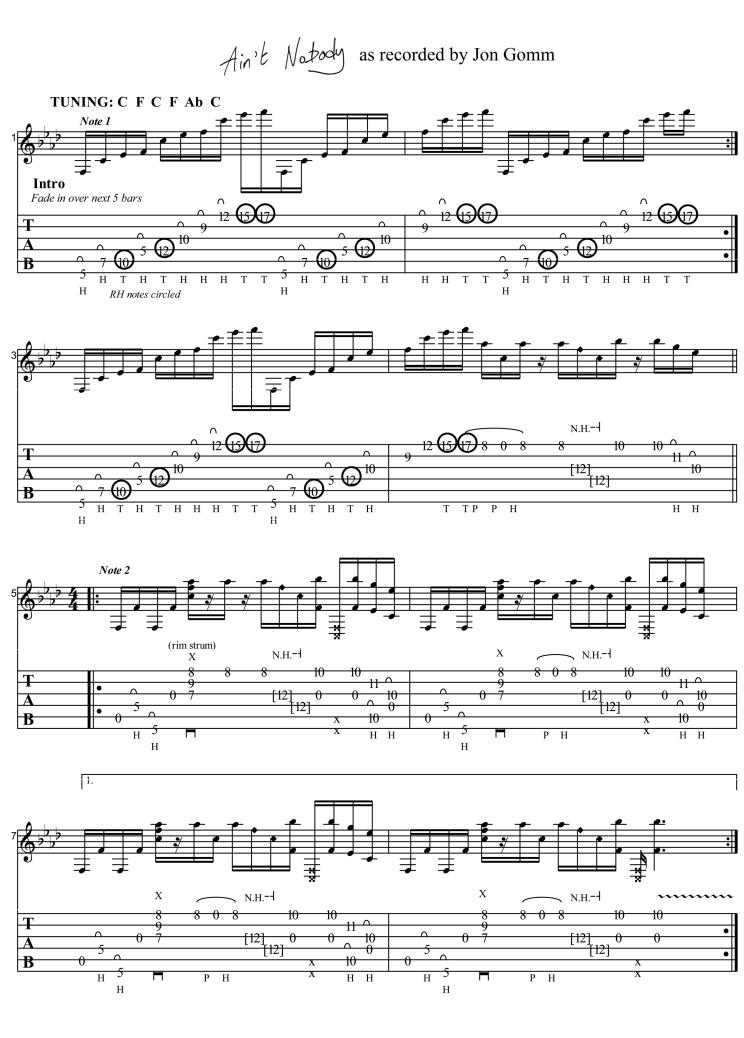
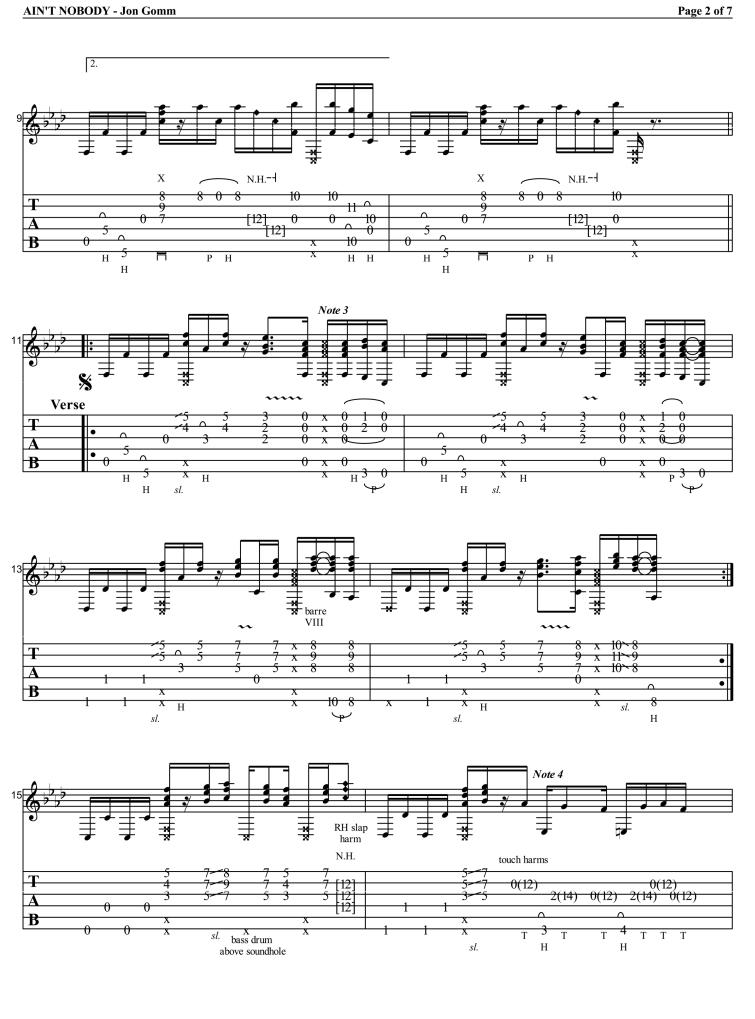
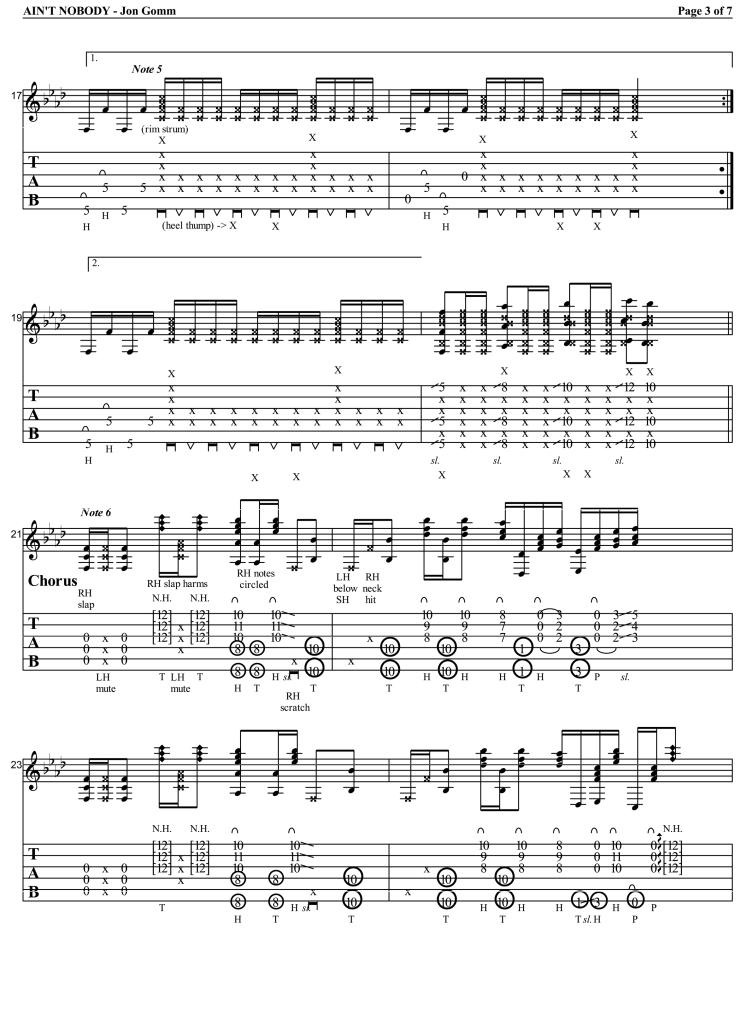
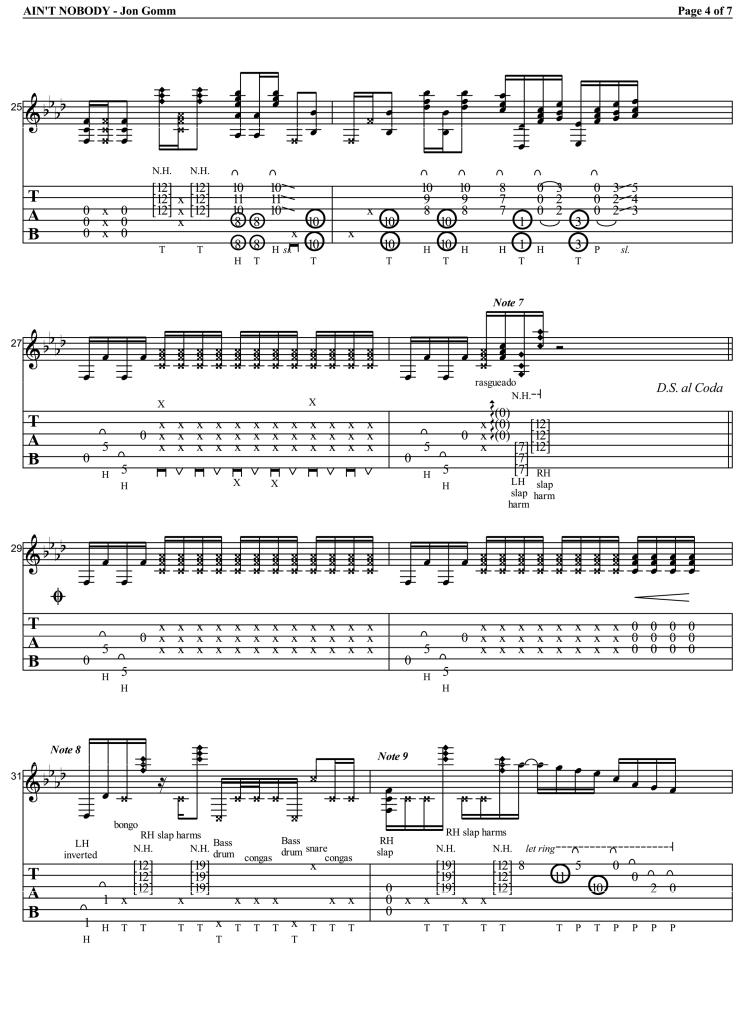
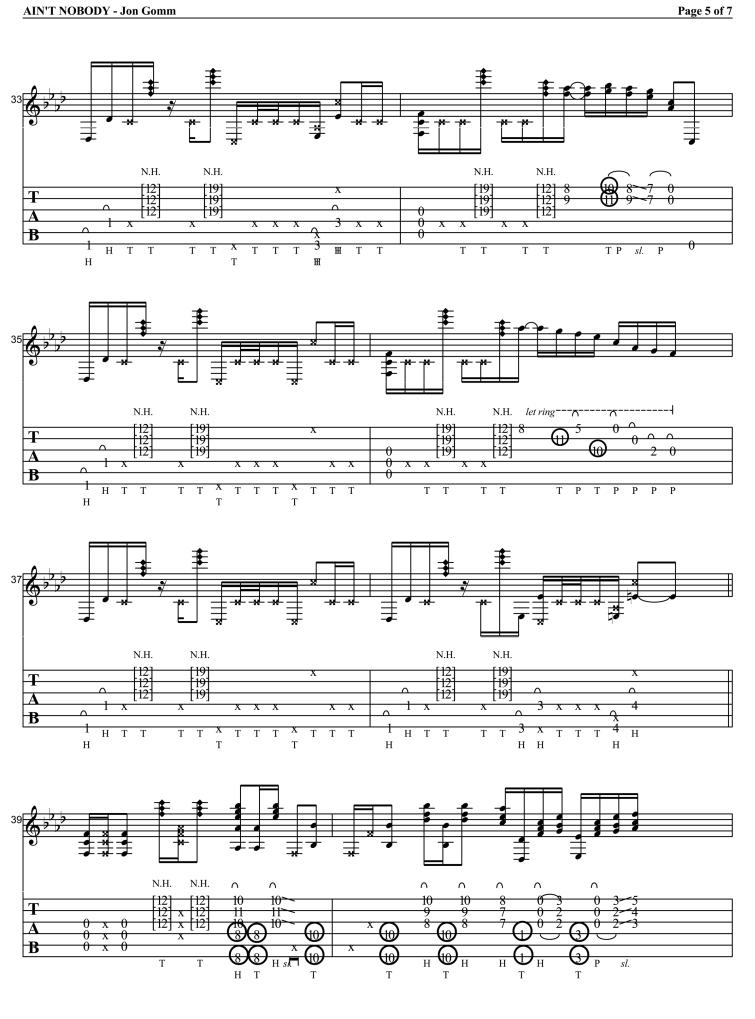
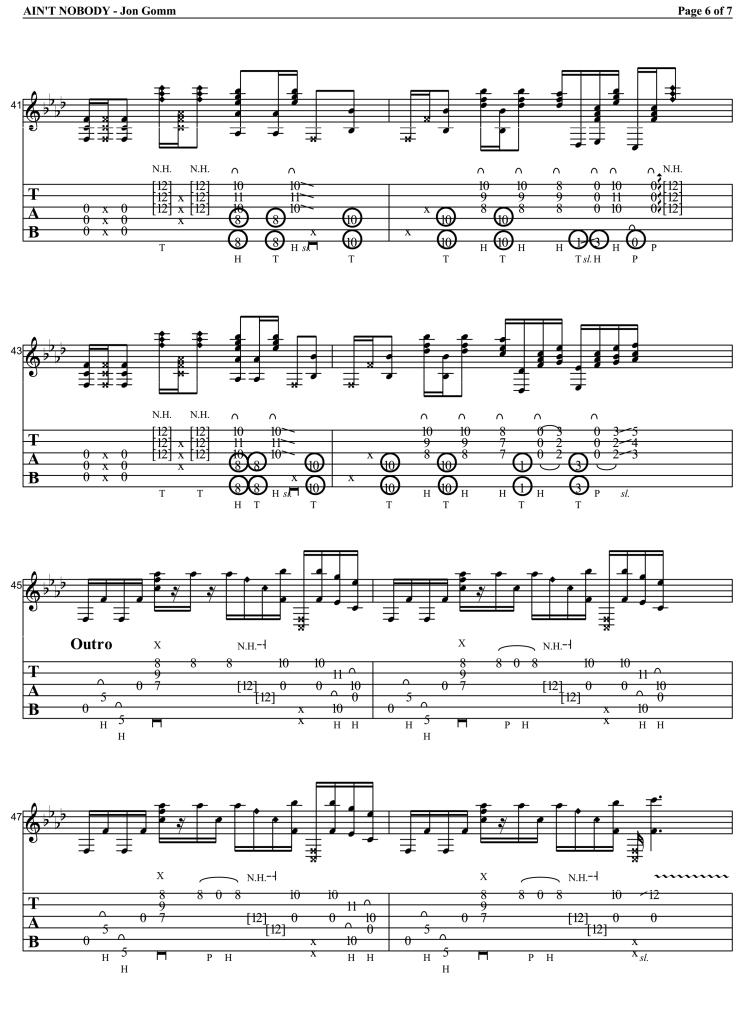
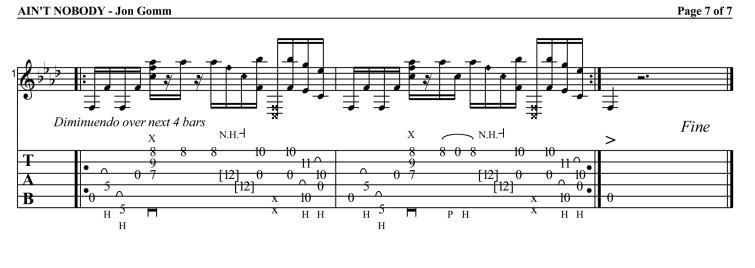
PERFORMANCE NOTES
TUNING: C F C F Ab C (open F minor). The recording is slightly sharp – the string tension just felt better a little sharp that day. This tuning is quite low, I use very heavy strings. It will sound just fine if you tune a tone higher – D G D G Bb D.
NOTE 1
All the notes here are hammer-ons, either with the left hand or right hand (circled notes).
NOTE 2
The X above the tab stave represents a “rim strum”. The triad is played with a downstroke with the middle finger, which then follows through to flick the rim of the soundhole for a percussive thwack. It’s one motion, not two!
The two X’s marked on the 6th and 5th strings represent a thumb slap – this recurs through the piece, so look out for it. The side of the right hand thumb is brought down against the bottom string or bottom two strings (it doesn’t matter too much, whatever sounds best at the time).
NOTE 3
The X’s here mark more string slapping, but this time the side of the thumb and the back of the fingers are all brought down against the strings.
NOTE 4
“Touch harmonics” – touch the node with the tip of the outstretched index finger of the right hand (at the 12th fret if it’s an open string being played, or 12 frets above the note being fretted by the left hand). Then pluck that string with the thumb of the right hand. A couple of bass notes are tapped with left hand hammer-ons while this is going on, which makes it a little trickier.
NOTE 5
Mute all the strings with the left hand. The strumming is simple semiquavers – downstrokes are played with a flick of the back of the middle finger nail, upstrokes with an upward flick of the back of the thumbnail. A couple of the downstrokes are “rim strums”, as described in Note 2. And there are some “heel thumps” – as you play the downstroke, drop the heel of your right hand (the corner of the thumb muscle) down against the bridge, or the soundboard just by the bridge if you prefer.
NOTE 6
The opening power chord is sounded with a slap of the right hand thumb. The mute in between is a left hand string-slap, marked “LH mute”. This is followed by some slapped harmonics, and then some tapping – the triad on the top three strings is hammered on with the left hand, and the two bass notes (circled) are hammered on with the right hand.
The X on the 5th string with a downstroke mark underneath is a “scratch” – I literally scratch the wood of the soundboard, in this case above the fretboard. This will damage your guitar. If you like, you can add a “scratchpad”, invented by my good friend and wonderful guitarist Thomas Leeb. Basically a panel of unfinished softwood stuck to the guitar. Thomas’ first scratchpad was made from a sushi box, stuck on with double-sided tape.
The percussion at the start of the second bar of the chorus is played thus: “LH below SH” means a left hand finger is bought across to strike the soundboard somewhere below the soundhole, near the cutaway (or where the cutaway would be if you don’t have one!). “RH neck hit” – the Right hand thumb is hit against the side of the neck. Basically as you place your thumb there to perform the right hand taps (you should always have your thumb in contact with the neck if possible when tapping), do it harder than necessary to produce a woody percussive sound.
NOTE 7
This “rasgueado” strum is performed by flailing first with the ring, then middle and then index finger in quick succession.
NOTE 8
The “bongo” sounds in beats 1 and 2 of bar 31 are produced by hitting the soundboard above the fretboard with the right hand thumb.
The “bass drum” in beats 3 and 4 is the heel of the right hand, on the soundboard roughly below/behind the bridge.
The “congas” in beat 3 are in the same place (soundboard behind bridge) but played with the fignertips and thumb. I play them “m, i, p” (Middle, index, thumb).
The “snare” is a slap of the side of the guitar, on the bottom bout.
The “congas” in beat 4 are played on the soundboard – I play the first one with fingertips below the soundhole, the second one with thumb above the soundhole. This is partly for the timbre, but partly to get the right hand back in position for the next bar!
NOTE 9
These bongos are as Note 8, but the first of each pair is played with a fingertip of the left hand, and the second of each pair with the right hand thumb.
